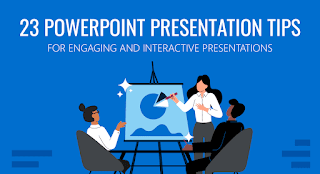EdTech and Special Education: Enhancing Inclusivity in the Classroom
Inclusive education is a fundamental aspect of modern schooling, aiming to provide equal opportunities for all students, including those with disabilities. Educational Technology, or EdTech, plays a pivotal role in making this vision a reality. In this blog post, we will explore how EdTech is transforming special education, fostering inclusivity, and ensuring that every student can access high-quality education tailored to their unique needs.
Understanding Special Education
Special education is a field dedicated to addressing the educational needs of students with disabilities. These disabilities can be physical, cognitive, sensory, or developmental in nature. Traditionally, students with disabilities may have faced significant challenges in accessing a standard classroom curriculum.
The Role of EdTech in Special Education
EdTech solutions are revolutionizing the way students with disabilities are educated. Here's how:
Personalized Learning: EdTech enables teachers to customize lessons and materials to match individual student needs. Students can progress at their own pace, ensuring they grasp concepts thoroughly.
Accessible Learning Materials: Digital textbooks, e-readers, and audiovisual resources are easily adaptable to various disabilities. Features like text-to-speech, screen readers, and alternative input methods empower students to engage with the content.
Communication Tools: EdTech facilitates communication for students with speech and language impairments. Augmentative and alternative communication (AAC) apps and devices help them express themselves effectively.
Assistive Technology: Specialized devices and software, such as screen magnifiers or voice recognition software, make it possible for students with physical disabilities to interact with computers and tablets seamlessly.
Benefits of EdTech in Special Education
Improved Engagement: EdTech makes learning more interactive and engaging, which is particularly beneficial for students with attention difficulties or sensory impairments.
Individualized Support: EdTech tools offer tailored interventions, adapting to each student's strengths and weaknesses.
Progress Tracking: Teachers and parents can monitor students' progress more effectively using data analytics and reporting features in EdTech applications.
Increased Independence: EdTech empowers students to take control of their learning, boosting their confidence and self-esteem.
FAQs
Q1. Are there specific EdTech tools designed for students with disabilities? A1. Yes, many EdTech tools cater specifically to students with disabilities. Some examples include Tobii Dynavox for communication, Bookshare for accessible books, and Kurzweil 3000 for text-to-speech support.
Q2. How can teachers receive training in using EdTech for special education? A2. Many organizations offer professional development programs and workshops on using EdTech in special education. Additionally, online courses and webinars are readily available.
Q3. Is EdTech expensive for schools or parents of students with disabilities? A3. While some EdTech solutions can be costly, there are many free or affordable options available. Schools may also receive funding to implement EdTech for special education.
Conclusion
Educational Technology is reshaping the landscape of special education, making inclusivity a reality. By offering personalized learning, access to accessible materials, and communication tools, EdTech is ensuring that every student, regardless of their abilities, has the opportunity to thrive in the classroom. Embracing EdTech is not just a technological upgrade; it's a commitment to providing equitable education for all.




Comments
Post a Comment